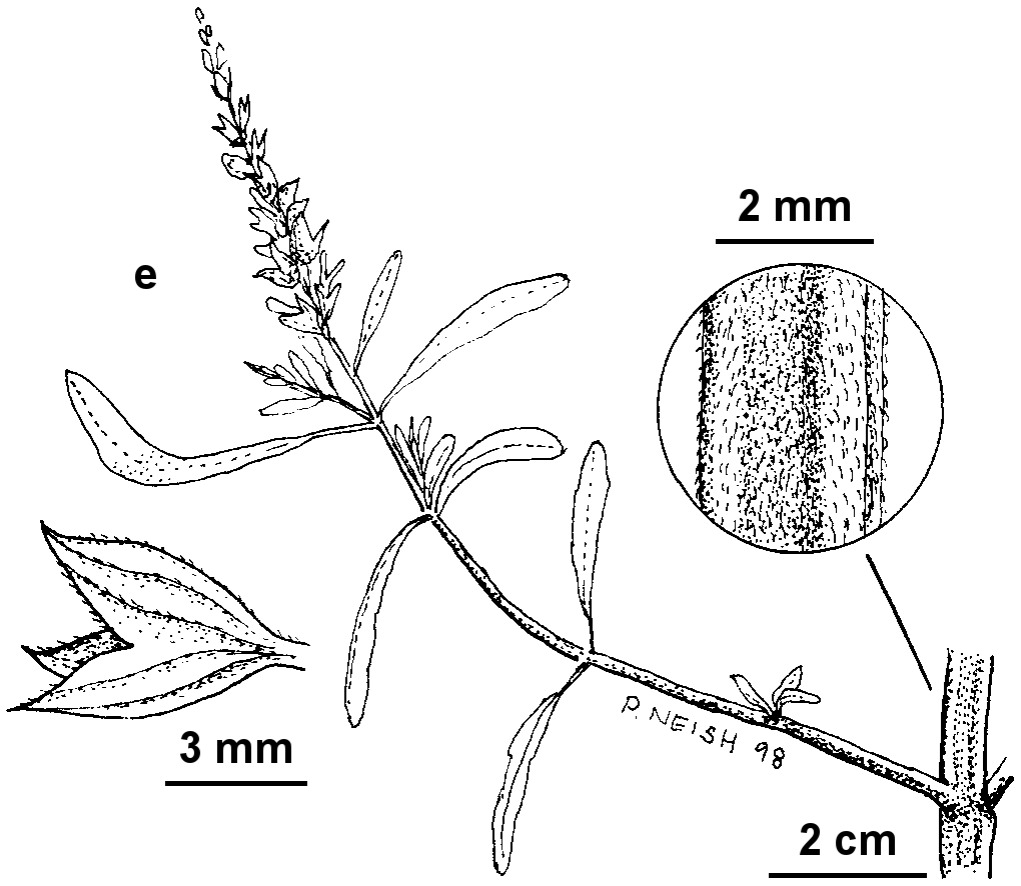Salvia reflexa
Hornem. MintweedAnnual subshrub to c. 60 cm high, more or less densely covered with short, recurved simple hairs, c. mint-scented. Leaves narrowly ovate to narrowly elliptic, 1.5–5 cm long, 0.4–1.2 cm wide, upper surface c. glabrous with sessile glands, lower surfaces greyish with antrorsely curved hairs and sessile glands, apex obtuse (rarely acute), base tapered, margin almost entire, with shallow distant serrations; petiole 0.3–2 cm long. Inflorescence raceme-like, unbranched, with flowers in opposite pairs; bracts subulate, deciduous. Calyx 5–7 mm long, 13-veined, with short, antrorse hairs mostly along veins and sessile glands, adaxial lip c. entire, or minutely 3-toothed at apex, abaxial lip bifid; corolla pale blue, 7–10 mm long. Flowers Oct.–Mar.
MuM, Gold, HSF. Also naturalized, SA, Qld, NSW. Native to North America. In Victoria recorded as garden-escape in Culgoa, Castlemaine and Heathcote areas.
This species has been reported to cause fatal poisoning of stock in Queensland and New South Wales.
Conn, B.J. (1999). Lamiaceae. In: Walsh, N.G.; Entwisle, T.J., Flora of Victoria Vol. 4, Cornaceae to Asteraceae, pp. 418–459. Inkata Press, Melbourne.
 Spinning
Spinning



